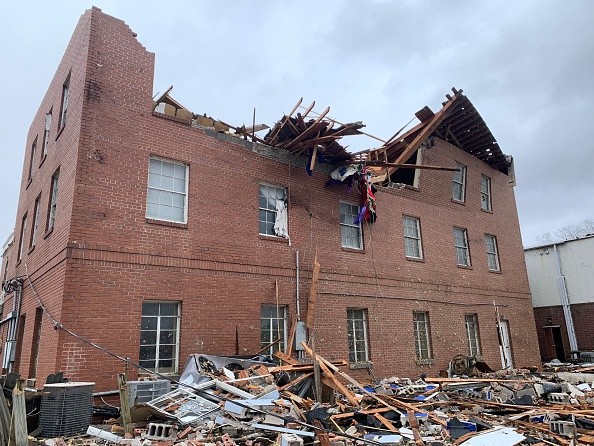Given that February is a winter month, severe weather remains a hazard, and tornadoes may be fatal when they strike. Severe weather is predicted to hit areas of the South this week.
When a strong jet stream disturbance travels over the South, Ohio Valley, or East in the winter, and cold air near the surface is either retreating or missing, severe thunderstorms and tornadoes are common.
February Tornadoes
Tornadoes are most common in February in the Deep South, although they also occur in the Ohio Valley and sections of the Carolinas from time to time. According to a report in Weather, the South is in greater danger because of its closeness to the Gulf of Mexico, where warm, moist air may rush northward, adding to the atmosphere's instability.
In rare cases, though, tornadoes can form outside the red-shaded zones. The first deadly February tornadoes in Virginia happened on February 24, 2016, while the first F/EF2 or stronger February tornado on the record developed in Pennsylvania on February 24, 2016.
Tornado Outbreaks

In the 20 years between 2000 and 2019, there were an average of 41 tornadoes every month. As a result, it is one of the three months with the least tornadic weather, about on pace with a typical January or December.
However, in the 20 years of February tornado data, there are outliers on both sides of the scale.
There were more than 100 twisters in February 2008 and 2016, respectively. However, in the four years from 2000 to 2019, there were fewer than ten tornadoes in a single month. The preliminary figure for February last year was 11.
In 2008, when 147 tornadoes were verified in February, the record for the most tornadoes was set. With only one tornado in February 2010, it was the month with the fewest tornadoes.
With 86 confirmed tornadoes, the so-called Super Tuesday outbreak of February 5-6, 2008, had the most for a single February occurrence. According to NOAA's storm events database, the second-largest February tornado outbreak with 75 tornadoes occurred on February 23-24, 2016.
An F4 tornado hit Mississippi on February 21, 1971, killing 58 people, making it the worst storm since 1950. On the 19th and 20th of February 1884, 167 people were murdered in the Southeast by tornadoes.
In 2021, the most recent tornado to strike in February was in Brunswick County, North Carolina. An EF3 tornado killed three people, one of just 11 tornadoes documented in the United States this month.
What Makes them Dangerous?
Severe tornado outbreaks are incredibly deadly because of several factors, including:
- Given the intensity of the steering winds aloft, severe thunderstorms may often travel at rates of up to 55 mph. When you get a warning, it's better to run for cover as soon as possible. Don't step outside or check out the window first to confirm the threat.
- Even if no supercell thunderstorms form, short, rain-wrapped tornadoes can emerge without notice, embedded amid extended squall lines of severe thunderstorms. Rain may obscure the tornado in certain supercell tornadoes.
- In rare cases, a fast-moving squall line of severe thunderstorms can create straight-line winds on the scale of EF0 or EF1 tornadoes. Without a tornado in progress, trees, electricity lines, and even building damage are conceivable in these scenarios.
- With such tremendous jet-stream-level energy in winter, severe thunderstorms can erupt at any time of day, even the night or early morning, rather than the traditional late afternoon/evening time period.
For most recent weather news, don't forget to follow Nature World News!
© 2025 NatureWorldNews.com All rights reserved. Do not reproduce without permission.





